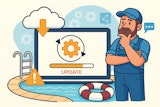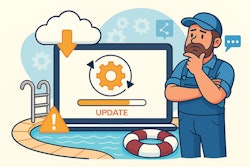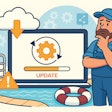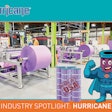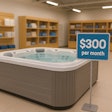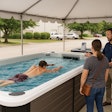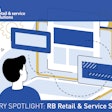
For decades, we put high-horsepower single-speed pumps on pools and watched those electric meter dials spin around and around and around. We created all this resistance to flow, and our customers paid untold millions of dollars in sky-high utility bills to overcome a problem of our own creation.
It was silly.
Now we know better. The high-TDH, high-flow holdouts are an ever-diminishing percentage of the industry. And now we have the opportunity to look like geniuses to our customers by selling them something that pays for itself over and over — and keeps the water clearer.
But how do you broach the subject with your customers? What are some of the most compelling arguments and how do you craft them?
Ben Honadel has some good ideas on that topic. A 27-year industry veteran, Honadel owns Pools by Ben, a service company in Santa Clarita, Calif. An early adopter of new technology, he bought one of the first variable speed pumps sold in California. He has since become a leader in sales and installations, and has provided technical support and consulting to leading manufacturers of variable speed pumps. He currently teaches a seminar on how the VSP can help service pros make money and improve the pool experience for homeowners.
I originally intended to interview him as background for this story, but his responses were so good, I decided to leave them just as they are in a Q and A.
It's been an education process for the last 10 years. Where is the industry at with respect to the advantages of the VSP and low-flow pumping?
The industry has come around. There are a lot fewer guys out there saying, "Oh, the variable speed pump is too expensive, you're better off with a cheaper 1-hp single speed pump" — even though that's a poor decision because you will pay so much more in electrical costs, and also it's against the law in California. Some of the old school guys were slow to come onboard with that. They'd say, "I've been doing this for 30 years, and I always put a 2-hp single speed pump on my pools, and anybody who doesn't like it can go pound sand."
But you know, the world changes.
And I can understand where they're coming from. Any time you make any change, you have to train, and the new system may have its own issues. But the industry has incorporated the variable speed pump as a whole, and we're down to that last 20 percent of builders that, no matter what, you'll never get them to change. They're the guys that don't have email, either.
How do you approach the homeowner about a new VSP?
I'll be there working on something, talking to them about their pool. And I'll point to their 2-hp pump and say, "Your pump is working just fine, but it's using 2,400 watts. That's like a house lit up with 24 100-watt lightbulbs. The new ones today are much more energy efficient. They use less than 100 watts."
And I show them that, using the online tools from the pump manufacturers that are available.
The average homeowner can understand that. I'm replacing 24 100-watt lightbulbs with just one. Obviously that will be an energy savings.
And a lot of times, they've heard a little bit about it. They may be skeptical or unsure, especially when the pool guy is not confident, and says something like, "I don't know, I've heard they save money," or maybe, "They're really expensive but they save electricity," or something like that.
You need to say, "This is a great financial move. It will save you $1,000 a year. It will pay for itself in x number of months." You need a ringing endorsement.
So you break it down with them?
Yes, I start with where they are. I say, "This is what you've got right now — 2400 watts" (or 2000 watts or whatever they are using).
And I tell the homeowner, "It's going to cost you $1,500 installed, but there's a $500 rebate, and it will save you $1,000 a year. You'll get your money back the first year."
Everyone's savings will be a little bit different. You try to be as precise as you can, but some people will save $1,500 and some will save $890 but the savings are going to be good enough that they are not going to come back and say, "This pump only saved me $890 this year, go rip it out."
These numbers are from my territory here in Southern California where energy is expensive (35 cents per kilowatt). But even in other areas where electricity is cheaper, it's still a really good deal.
How do you use the rebates?
The rebates are a double-edged sword.
In one area here they give a $500 rebate. Many others are less, but I use this fact to provide independent confirmation that the pump will save energy. I tell the customer, "Look, the power company gives a $50 rebate for an energy star fridge, but it gives a $500 rebate for a variable speed pump. That's because they really want to reduce usage and these variable-speed pumps are better than just about anything at cutting electrical power usage. The utility is telling you these pumps really work; they're right, and you should get one."
In our area, DWP is giving $500 rebates, Edison and PG&E are giving $300 rebates. I've been complaining for years to them because of that $300, the installer gets $100, which I pass on to the homeowner anyway.
You give your rebate to the customer?
Yes, splitting the rebate only complicates things and reduces their incentive.
Rebates already have a bad reputation, most homeowners don't really believe in them. They say, "You're full of crap. I hate filling out paperwork, and whenever I apply for a rebate, I never end up getting it."
So I tell my customers, "I do the rebate paperwork 20 times a month; I've got it down. So I'll do the rebate paperwork for you. I'll take the $300 or $500 off your bill upfront, and then I'll just take the rebate check when it comes." (With Edison that's 6-8 months by the way).
This is helpful because it lowers the size of the check the customer has to write upfront. If it's a $500 rebate, that means the homeowner only has to write a check for $1,000 and he's done. They like that a lot better than writing a check for $1,500 and filling out forms and waiting for a rebate check they're not sure will ever arrive.
You mentioned the confidence necessary to convince the homeowner. How do you acquire that?
I think you have to prove it to yourself first. When we started installing them, I wanted to see for myself how it would work in the real world. So did my own research. I said to my customers, "We'll let you buy the pumps in $20 monthly installments, but you've got to send me a copy of your power bill each month.
And people did it.
There is some randomness to everything, but on the whole we saw these tremendous drops in people's power bills. The homeowners noticed, too. They were like, "Hey, Ben, my power bill dropped $150 this month, and the pump is only costing me $20 so I'm getting $130 in new money. This is the best thing ever!"
Watching that happen again and again convinced me that these pumps are for real, and enabled me to look the homeowner in the eye and say, "You're going to save at least $1000 a year with this pump because I've seen it for myself."
If they were skeptical I'd say, "The only way you won't save that is if you're not running your pool pump. But if you're using your pump normally, that's what you'll save." That has overcome a lot of hesitating homeowners.
What about the performance advantages of VSPs?
Honestly, I think people would buy the pump just for the performance advantages if we sold it that way. When the VSP came out, people in the industry were saying, "Nobody's ever going to spend that much money on a pump."
I'm like wait — if you run the pump slow for a long period of time, the pool skims better, the chemicals are mixed up better, it filters better, your water is clearer and your pool is cleaner.
I think they could have sold it for the clear water alone. They could have said, "Use this pump, and you'll get crystal clear water and a clean pool. And that would have been true, and people would have bought it for clear water, which is what they want.
And then you could add that, "Oh, by the way, your utility bill is going to drop by quite a bit, too."
But when the pumps came out, all they pushed was energy savings. And people were skeptical. And everybody got their calculators out. I did, too. I bought one of the first ones.
Homeowners Have Variable Speeds, Too
The success of the variable speed pump purchase depends to a large extent on the ability of the homeowner to operate the equipment. These units have become more user-friendly over the years, but some homeowners can have trouble, especially if it's not part of some overall backyard automation system. Honadel uses videos to instruct homeowners on necessary tasks; these videos reside on their home computers, ready to use when needed:
"Say they have a spa and they need to know how to start it up. I use my iPhone to take a video of me starting up their spa — here I am hitting 'speed 1' to turn the pump on, it speeds up, then you rotate this valve, and rotate this other valve, and then you go over to the heater and you hit this to button to raise the spa temperature up to 104. Stop. That's spa on.
"And then I email them the videos of me operating their equipment. So in six months, when they want to start up their spa, they just go to their computer, run the video, and it shows them exactly how to turn on their equipment. This eliminates a lot of calls we used to get from people who forgot how to start their spa.
"The idea came from my teenage son. He was sitting in my office, playing with his phone, waiting for a ride home, and this lady calls — I'd installed her pump a week before and now she can't remember what I said about turning on the spa.
"And I'm trying to explain it to her on the phone. And she's not getting it. I'm trying to be patient, and my son's trying to be patient, too. And I'm trying to talk to this lady, and I look over at my son, and he's pointing to his phone, saying, 'Dad… Dad… Dad…'
And put the lady on hold and say, 'What do you want?'
And he says, 'Just take a video and send it to her. Then she'll never call you again.'
"Hmmm.. Now why didn't I think of that? I took the lady off hold and said, 'I'll be over later to take a video of the whole procedure, email it to you, and you'll always know how to do it from now on. I apologize, I should have done this in the first place.'
"She's thrilled. And I'm thinking, 'Why does it take an 18-year-old kid to tell me to do a common sense thing that is free.'"
Comments or thoughts on this article? Please e-mail [email protected].





















